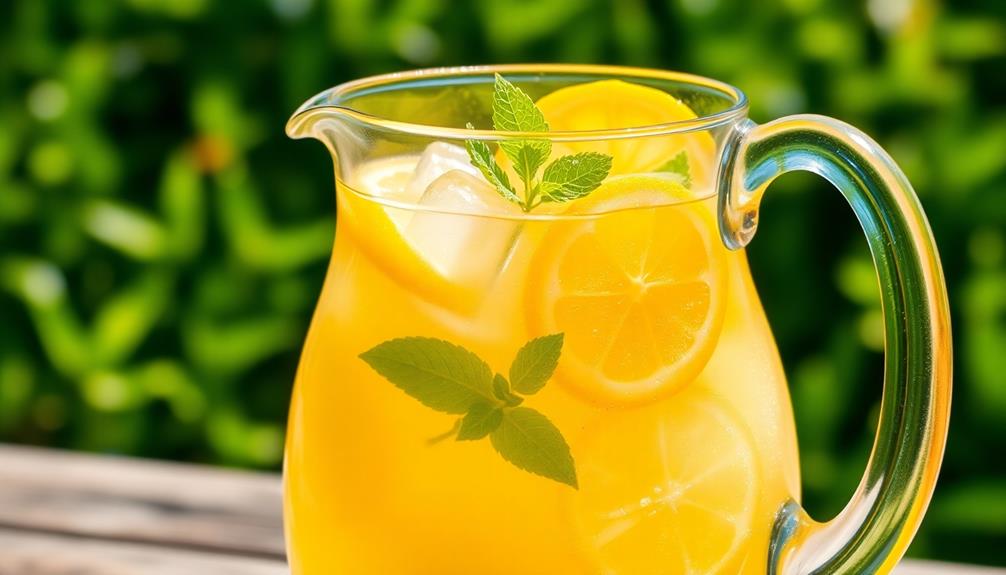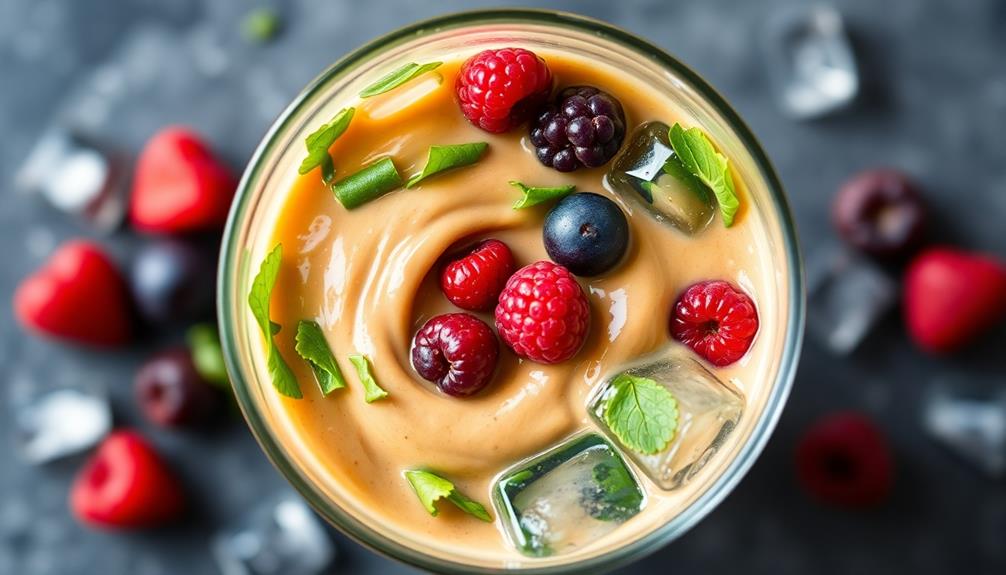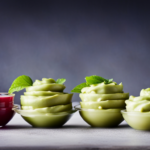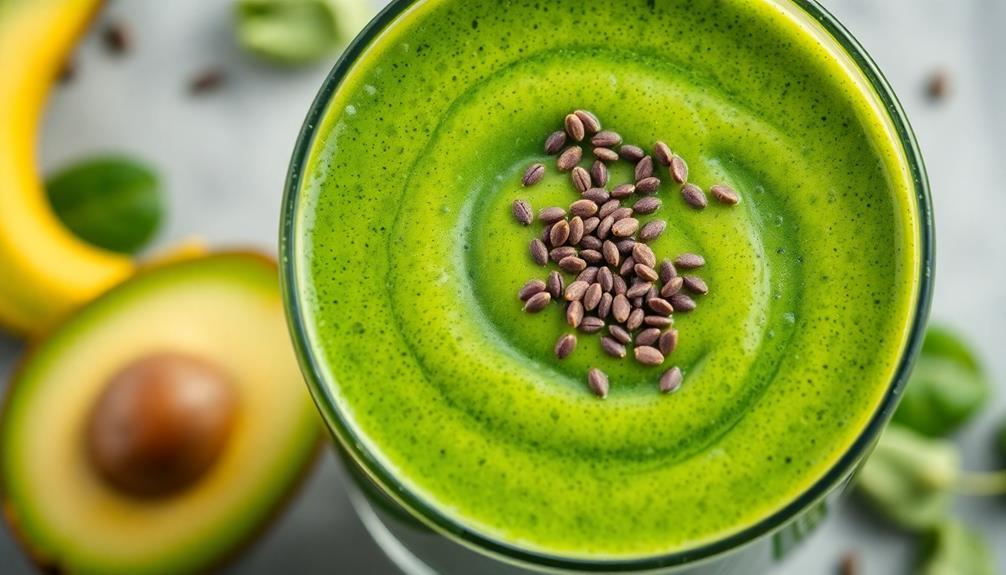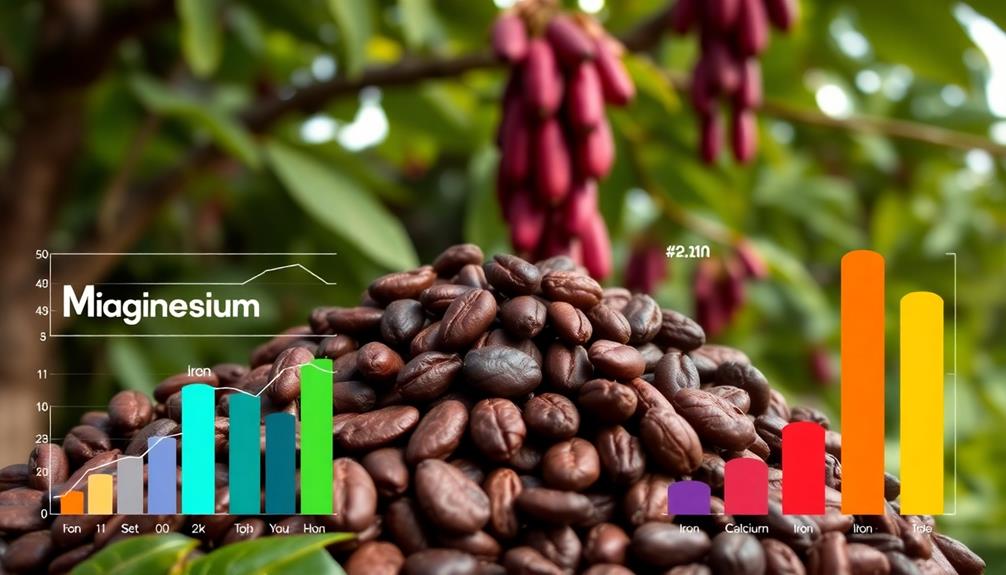Living lemonade is a refreshing twist on the classic summer drink. You'll start with freshly squeezed lemons, then add raw honey, filtered water, and a mix of ginger, mint, and lemon balm. Chia seeds provide added fiber and probiotics. The fermentation process blends the flavors and introduces beneficial enzymes, resulting in a unique and delicious lemonade. You can customize the sweetness to your taste, and the possibilities for creative flavor combinations are endless – from fruit infusions to unexpected spices. And the fun doesn't stop there – you can even use the leftover lemon peels as natural cleaners! Intrigued? Keep reading to discover more.
Key Takeaways
- Living lemonade is a probiotic-rich, fermented beverage made with fresh lemon juice, raw honey, ginger, and herbs like mint and lemon balm.
- The fermentation process enhances the flavor profile and introduces beneficial enzymes and live cultures to promote gut health.
- The versatility of living lemonade allows for endless flavor combinations, from incorporating fresh fruits to unexpected spices.
- Leftover lemon peels can be repurposed as natural cleaners and the zest can be infused into the lemonade for added citrus notes.
- Thoughtful garnishing with lemon wedges, mint sprigs, and edible flowers can transform a simple glass of lemonade into a visually appealing centerpiece.
History

In the late 19th century, lemonade became a popular refreshment, quenching the thirst of people across the United States. Lemon juice, water, and sugar were the simple ingredients that made this drink so irresistible.
As the country grew, so did the demand for lemonade, paralleling the rise of family-friendly destinations like indoor water parks that provided fun escapes for people of all ages. Street vendors began selling it from carts, offering a quick and tasty way to beat the heat.
Soon, lemonade stands popped up in neighborhoods, run by entrepreneurial kids looking to earn some pocket money. These small businesses taught young entrepreneurs valuable lessons about supply and demand, customer service, and the satisfaction of hard work.
Lemonade also became a staple at county fairs, picnics, and other outdoor events, where its tart and sweet flavors complemented the festive atmosphere.
Over the decades, lemonade evolved, with creative flavors like strawberry and mango joining the classic recipe.
But no matter how it's made, this refreshing drink remains a summertime favorite, connecting people through its timeless taste.
Recipe

Lemonade is a classic summer refreshment that can be enjoyed in many ways. This living lemonade recipe takes the traditional concept and adds a twist by incorporating fresh herbs and a touch of natural sweetness.
The addition of chia seeds, known for their nutritional benefits, can elevate this drink by enhancing its fiber content and promoting digestive health.
The key to this living lemonade is the use of live cultures, which introduce beneficial probiotics and enzymes to the drink. These living ingredients not only enhance the flavor but also promote gut health and overall well-being.
Ingredients:
- 6 lemons, juiced
- 1/4 cup raw honey
- 1 cup filtered water
- 1 tablespoon ginger, grated
- 1 sprig fresh mint, plus more for garnish
- 1 sprig fresh lemon balm
- 1 probiotic capsule (optional)
In a large pitcher, combine the lemon juice, honey, and water. Stir until the honey is fully dissolved.
Add the grated ginger, mint sprig, and lemon balm. If using a probiotic capsule, open it and sprinkle the contents into the pitcher, stirring gently to distribute.
Let the mixture sit at room temperature for 12-24 hours, allowing the live cultures to activate and the flavors to meld. Stir occasionally.
Once the desired level of fermentation is achieved, transfer the living lemonade to the refrigerator and chill for at least 2 hours before serving. Garnish each glass with a fresh mint sprig.
Cooking Steps

Squeeze those fresh lemons with all your might – you want every last drop of that tangy, zesty juice!
This refreshing drink can be a delightful way to cleanse your palate after enjoying something rich like Chocolate Peanut Butter Bars.
Next, grab the sugar and sprinkle it in, stirring until it's completely dissolved.
Finally, pour in the water and give it a good stir to combine everything.
Go on, give it a taste and see if you need to tweak the sweetness or tartness.
Step 1. Squeeze Fresh Lemons
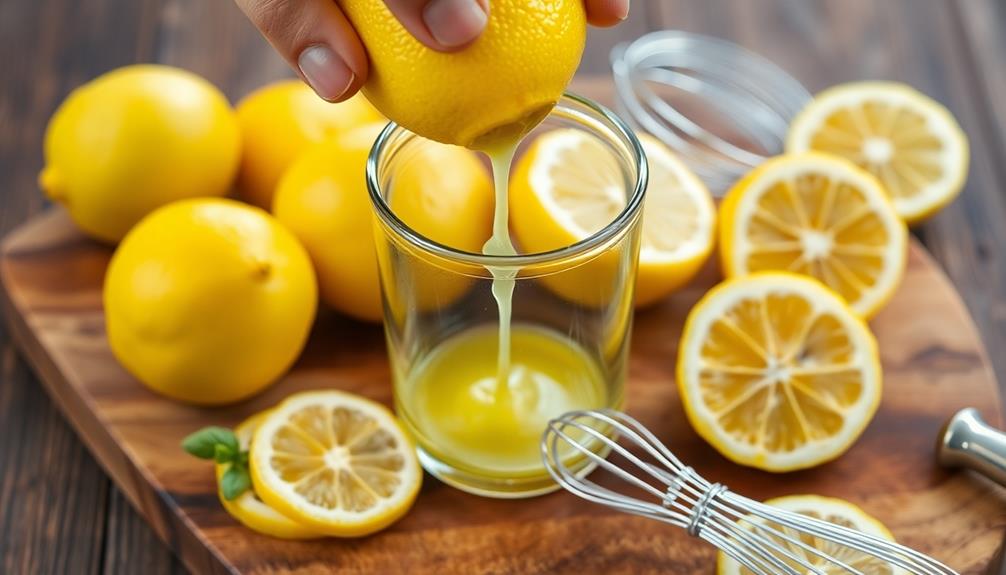
Gather a few fresh lemons and roll them firmly on the countertop to help release their juices. This simple trick will make it easier to extract every last drop of that tangy, refreshing liquid.
Once you've prepped your lemons, it's time to get squeezing!
Slice the lemons in half and hold one half over a sturdy bowl. Using the palm of your hand, press down firmly on the lemon half, rotating it slightly as you go. The juice will come flowing out, filling your bowl.
Continue this process with the remaining lemon halves, making sure to catch every precious drop.
Don't be afraid to really put some muscle into it – the more force you use, the more juice you'll get. Just be careful not to squeeze too hard and send seeds flying everywhere!
Once you've extracted all the juice, you're ready to move on to the next step in creating your delicious, homemade lemonade.
Step 2. Add Sugar
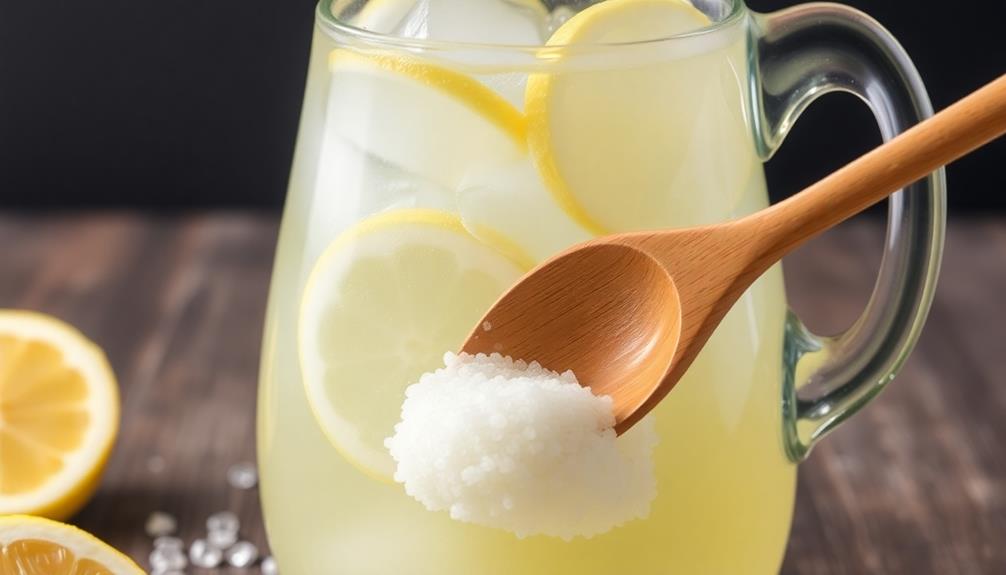
With the fresh lemon juice in hand, it's time to sweeten things up. Grab some sugar – white, brown, or even powdered will do! You'll need about 2 to 4 tablespoons per cup of lemon juice, depending on how tart or sweet you like your lemonade.
Start by adding 2 tablespoons of sugar to your lemon juice. Stir it up and give it a taste. If it's still too sour, add another tablespoon or two of sugar until you reach the perfect balance of sweet and tangy.
Don't be afraid to experiment – you can always add more sugar if it's not sweet enough. Once you've found the right sugar amount, keep stirring until the sugar completely dissolves.
This may take a minute or two, but it's important to make sure there are no grainy bits left. Your lemonade should be smooth, refreshing, and ready to enjoy over ice on a hot summer day!
Step 3. Add Water
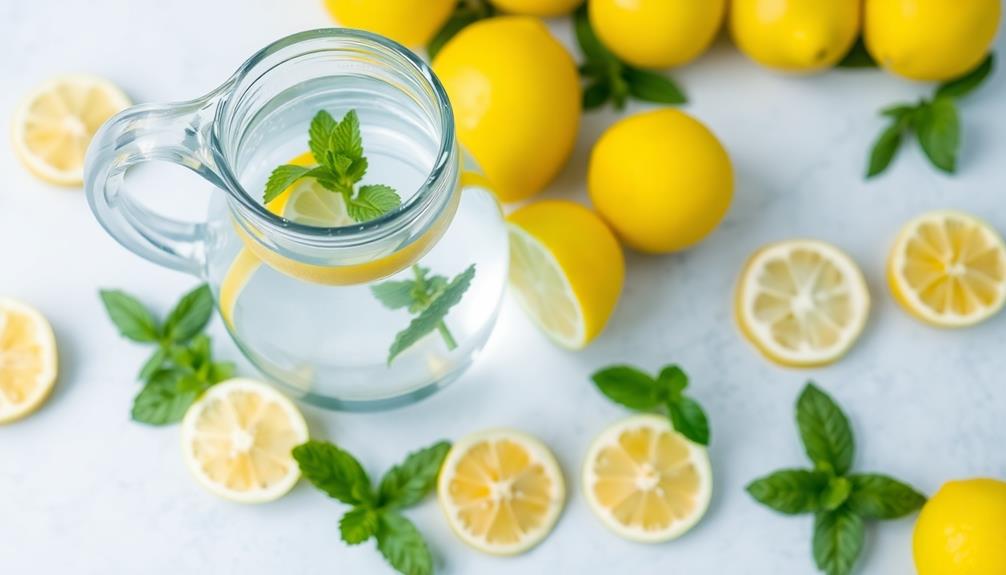
Now that you've sweetened the lemon juice to your taste, it's time to dilute the concentrated mixture.
Grab a clean pitcher or large glass and start by adding a cup of cold water. Stir it in gently until the sugar has fully dissolved.
Take a sip and see how it tastes. If it's still too tart for your liking, add a bit more water, a quarter-cup at a time, until you reach the perfect balance of sweet and sour.
Remember, the amount of water you need can vary depending on how much lemon juice and sugar you used earlier.
Once you've got the right consistency, you can start pouring your homemade lemonade into cups.
Be sure to give it a final stir before serving to ensure all the flavors are evenly distributed.
Grab a few slices of lemon to garnish the glasses and enjoy your refreshing, made-from-scratch lemonade!
Step 4. Stir to Dissolve Sugar
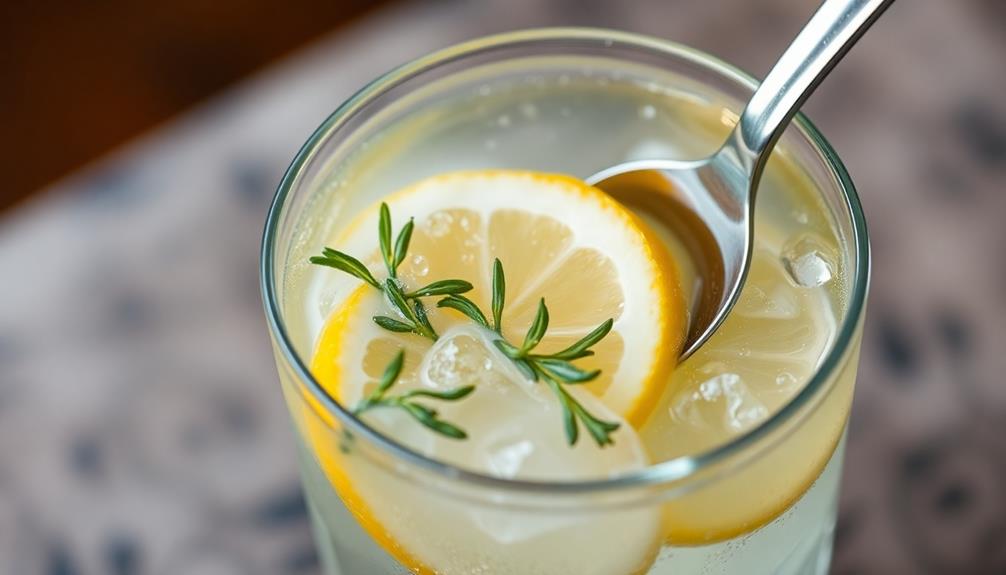
Once you've added the water, it's time to stir the mixture gently until the sugar fully dissolves. This is an important step that helps create the perfect lemonade.
Grab a spoon and start stirring the water and sugar together in a circular motion. You'll notice the sugar gradually disappearing as it dissolves into the water, creating a sweet, clear liquid.
Keep stirring for about a minute or two, making sure to reach all the way to the bottom of the pitcher or container. If you see any undissolved sugar granules, keep stirring until they've completely vanished.
The goal is to have a smooth, uniform mixture without any gritty bits. Once the sugar has fully dissolved, your lemonade base is ready for the next step – adding the lemon juice!
Step 5. Taste and Adjust Seasonings
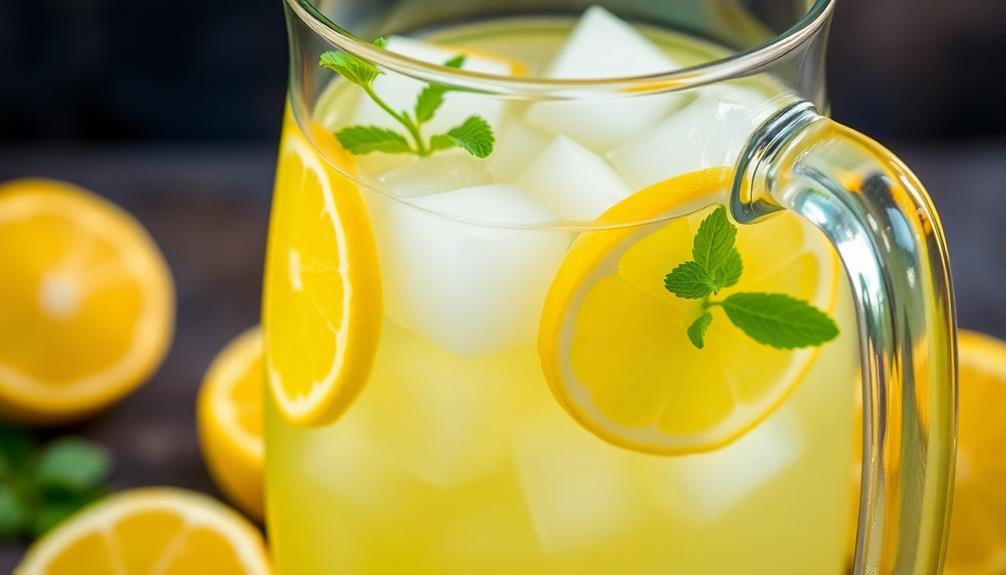
After stirring the sugar until fully dissolved, taste your lemonade. Go ahead, take a sip! How does it taste? Is it the perfect balance of sweet and tart, or do you need to adjust the flavors a bit?
Don't be afraid to experiment – that's the fun part! If the lemonade is too sour, add a touch more sugar. If it's too sweet, try squeezing in some extra lemon juice. Keep tasting and adjusting until you reach that delightful, refreshing flavor you're going for.
Feel free to get creative, too. You could try adding a splash of fruit juice or even a pinch of salt to really make the lemon zing.
The key is to keep tasting and tweaking until it's perfect for your taste buds. Once you've found the ideal balance, congratulations – your lemonade is ready to serve and enjoy!
Final Thoughts

As you sip the last drops of your refreshing lemonade, consider the versatility of this timeless beverage. Whether you enjoy a classic tart and sweet version or prefer to experiment with unique flavor combinations, the options are endless.
You can add fresh fruit, herbs, or even a splash of sparkling water to create a signature concoction. And don't forget the garnishes! A lemon wedge, mint sprig, or edible flower can elevate your lemonade and make it a true work of art.
Looking ahead, you can use leftover lemon peels to make a natural all-purpose cleaner or infuse your next batch of lemonade with the zest for an extra burst of citrus.
The possibilities are truly limitless when it comes to this refreshing and versatile drink. So, as you savor the final sips, start dreaming up your next lemonade masterpiece and get ready to quench your thirst in style.
Frequently Asked Questions
How Long Does Freshly Made Lemonade Last in the Refrigerator?
Freshly made lemonade typically lasts 3-5 days in the refrigerator. It's best to store it in an airtight container and consume it within this timeframe for optimal freshness and flavor.
Can I Use a Different Type of Sweetener Instead of Sugar?
Absolutely, you can use a different type of sweetener instead of sugar for your lemonade. Try honey, agave nectar, or even zero-calorie sweeteners like stevia to suit your dietary preferences and taste buds.
Is It Possible to Make a Large Batch of Lemonade in Advance?
You can absolutely make a large batch of lemonade in advance. Just be sure to store it properly in the refrigerator, and give it a good stir before serving to ensure the flavors are well-incorporated.
What Are Some Creative Flavor Variations for Homemade Lemonade?
You can get creative with homemade lemonade by adding herbs like mint or lavender, fruits like strawberry or peach, or even vegetables like cucumber. The possibilities are endless for flavorful and refreshing lemonade variations.
Can I Use Frozen Lemon Juice Instead of Fresh Lemons?
You can absolutely use frozen lemon juice instead of fresh lemons for your homemade lemonade. It'll give you the same great flavor, and it's a convenient option when fresh lemons aren't readily available.

